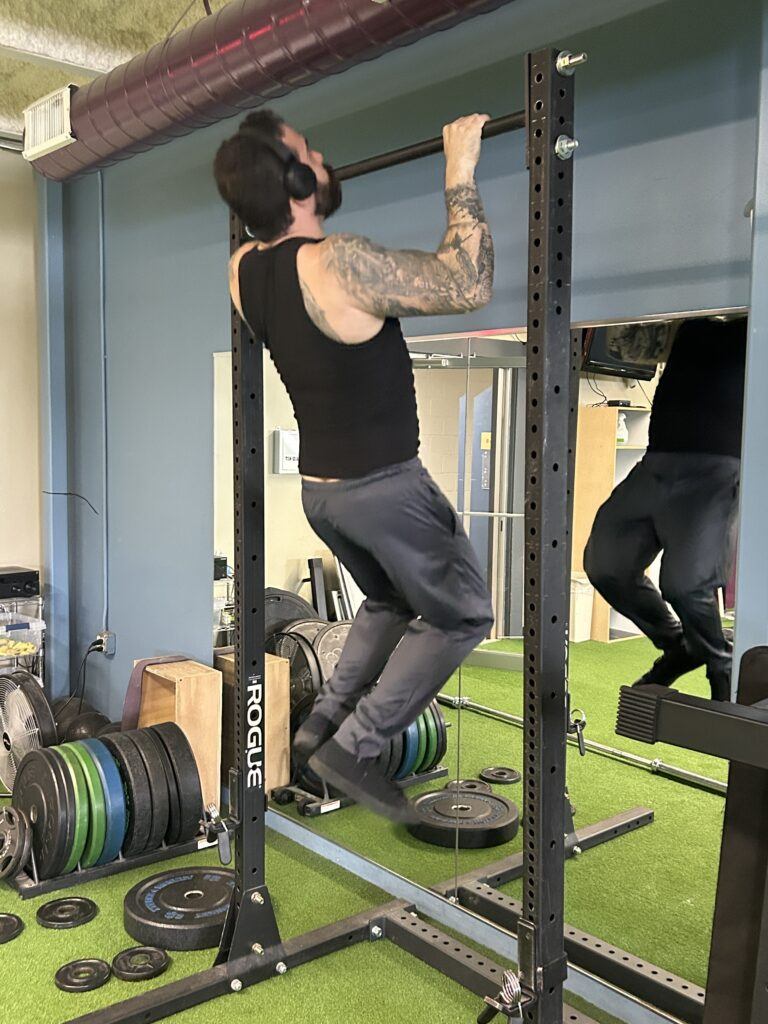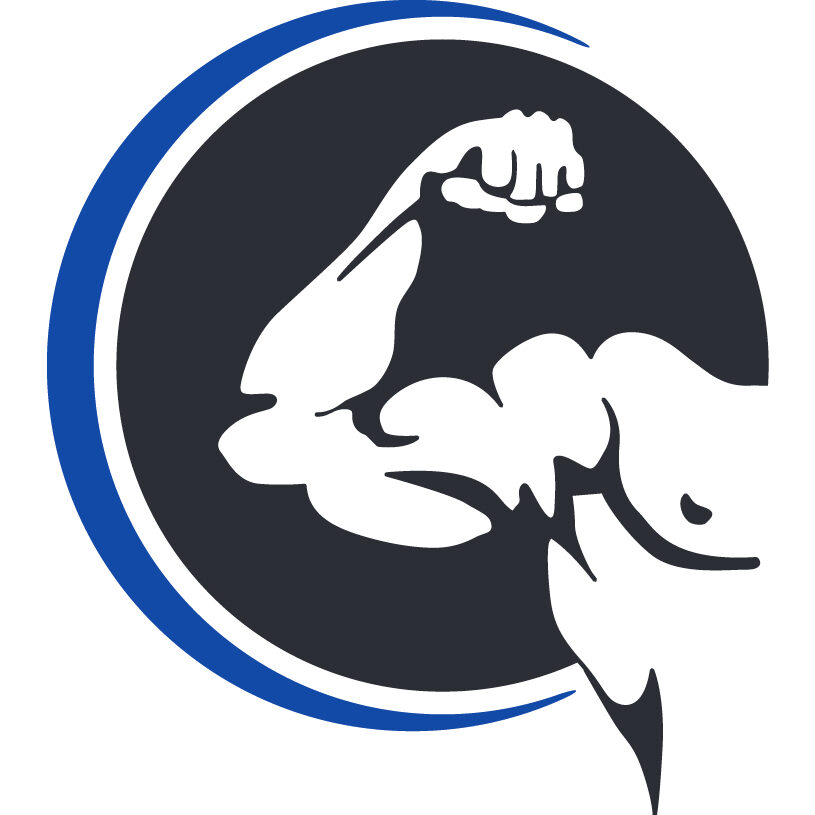


Today, I’m going to be talking about pull-ups, an exercise that’s all about strength and versatility. If you’re looking to beef up your back, shoulders, and arms, as well as tighten your grip strength and give your whole body a solid workout, then pull-ups should be on your radar.
The beauty of pull-ups is their simplicity and the compound movement that targets multiple muscle groups at once. When you heave yourself above that bar, you’re not just working your lats; you’re also engaging your biceps, triceps, shoulders, and even your core. This multilateral engagement is what sets pull-ups apart from isolation exercises, which focus on one muscle at a time.
Compare pull-ups with exercises like bicep curls or tricep kickbacks. While these are great for focusing on specific muscles, they don’t give you the same bang for your buck that pull-ups do. That’s because with every rep of a pull-up, you’re practically conducting a full upper-body workout. This efficiency can be a game-changer for anyone looking to optimize their workout routine.
Furthermore, the pull-up is a fundamental movement that harks back to our earliest physical activities, like climbing. It’s an exercise that establishes and enhances muscular coordination and functional strength. This means you’ll not only look stronger, you’ll also perform better in everyday activities that involve pulling or lifting.
Now, as we delve deeper into the world of pull-ups, we’re going to learn it’s not just about aesthetic gains. Pull-ups come with a whole host of health benefits that go beyond just muscle development. Pretty wild, right? But it’s true. In the next section, we’ll explore how pull-ups can do more for your body, like improving your posture, fortifying your grip, and even bolstering your mental health.
More Than Muscle: The Surprising Health Perks of Pull-Ups
I’m going to let you in on a little secret: pull-ups are a powerhouse when it comes to boosting not just your muscles, but your overall health and fitness. This exercise isn’t a one-trick pony; it offers a host of surprising benefits that extend far beyond building a chiseled back and biceps.
First off, let’s talk about grip strength. Each time you wrap your fingers around that bar and pull yourself up, you’re doing wonders for your hands, wrists, and forearms. A strong grip isn’t just impressive; it’s a fundamental aspect of fitness that carries over into everyday life. From carrying groceries to opening jars, a solid grip makes everything a bit easier.
What’s more, pull-ups are a friend to your posture. As you engage your back muscles to haul yourself up, you’re also training those same muscles to keep you upright throughout your day. Better posture doesn’t just mean standing taller; it’s about reducing the risk of back pain and keeping your spine happy and healthy.
Did you know that pull-ups can also be a boon for your core? Unlike specific ab exercises, pull-ups incorporate core stabilization into every rep. So, while you’re working up a sweat and focusing on your upper body, your core is silently reaping the benefits, preparing you for anything from sports to safely lifting heavy objects.
Now let’s not overlook the mental boost. Overcoming the gravitational pull isn’t just a physical feat—it’s a mental one, too. The satisfaction of progressing with pull-ups can enhance your mental resilience and confidence. These gains often translate to other areas of life, where discipline and dedication are key.
So, pull-ups can indeed elevate your fitness to new heights (quite literally). However, these benefits might feel distant if you’re at the starting line, looking up at the bar and thinking, ‘That seems impossible.’ I understand the hesitation, but I assure you, no one was born doing pull-ups. Everyone has a beginning.
Starting Your Pull-Up Journey: Tips for Beginners
Now, you may ask, ‘But what if I can’t hoist myself up for even one pull-up?’ And it’s a valid concern. Starting out with pull-ups can be daunting if you’re staring up at the bar wondering how on earth you’re supposed to lift your entire body weight with just your arms.
First off, if you’re hitting the gym, keep an eye out for the assisted pull-up machine. This fantastic piece of equipment is perfect for beginners. It provides adjustable counterweight assistance, meaning it takes on part of your weight, making it easier to complete each pull-up.
At home, you might not have access to such a machine, but resistance bands can be a game-changer. A thick band can support your knees or feet, providing you with enough assistance to perform proper pull-ups. With each session, you can graduate to bands with less and less resistance.
You’re going to want to nail the technique from the start to prevent any unnecessary strain or potential injury. Make sure you’re performing the full range of motion, and don’t neglect the ‘down’ part of the pull-up; it’s essential for building strength progressively.
Remember, every champion was once a contender that refused to give up. Your first attempt doesn’t need to be perfect, nor your last. It’s all about getting a little better each time you try.
Pull-Up Prowess: Crafting a Long-Term Strategy
So you’ve stepped up to the bar, and you’re beginning to see pull-ups as less of a challenge and more of an opportunity. But muscle isn’t made in a day, and neither is pull-up proficiency. It’s going to take time, effort, and a sound strategy to master this king of upper-body exercises.
If you want to keep improving, it’s crucial to integrate pull-ups into your overall fitness routine. This means setting measurable goals. Start with the basics, like aiming for one unassisted pull-up, then gradually increase your targets. Remember, it’s perfectly fine to take small steps to achieve big leaps.
But what about when you’ve nailed the technique and can knock out a set of pull-ups with ease? That’s when it’s time to switch things up and keep the momentum going. Explore variations like wide-grip, close-grip, or even weighted pull-ups to challenge different muscle fibers and keep your workouts fresh.
Finally, don’t underestimate the importance of mental grit. Overcoming the mental barriers that say ‘I can’t’ is just as important as the physical aspects of pull-ups. Celebrate every victory, no matter how small, and use any setbacks as fuel to come back stronger.
I really hope that by embracing pull-ups, you’re not only building muscle and confidence but also enjoying the journey towards a fitter, more capable you. Remember, fitness is a lifelong endeavor, and pull-ups are one effective, empowering move you can always count on. So, keep at it, and I can’t wait to see where your endeavors take you!

